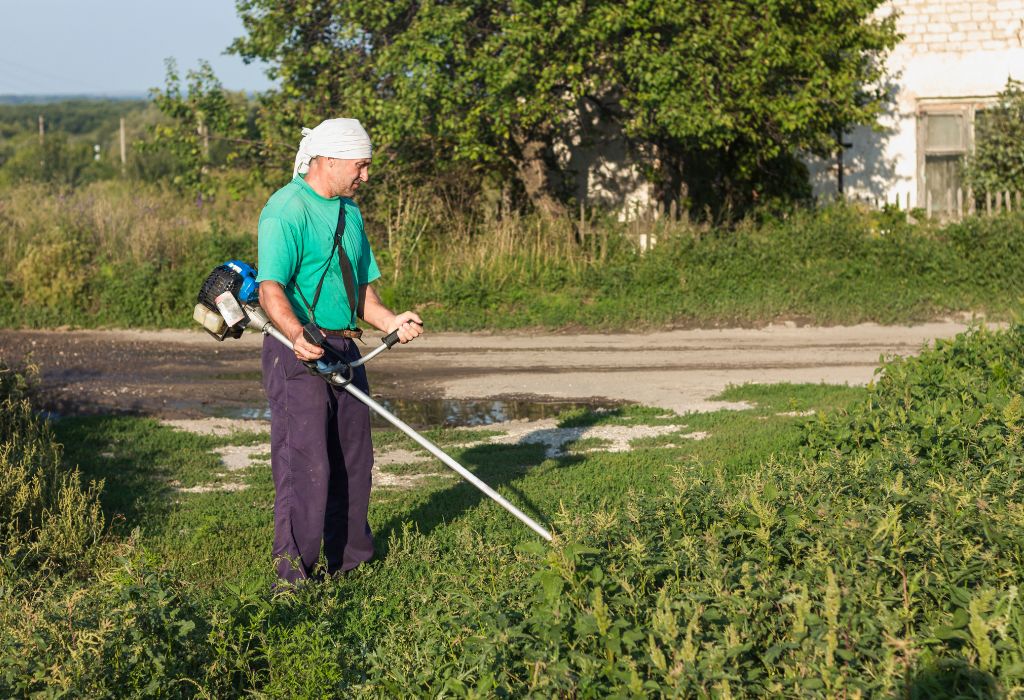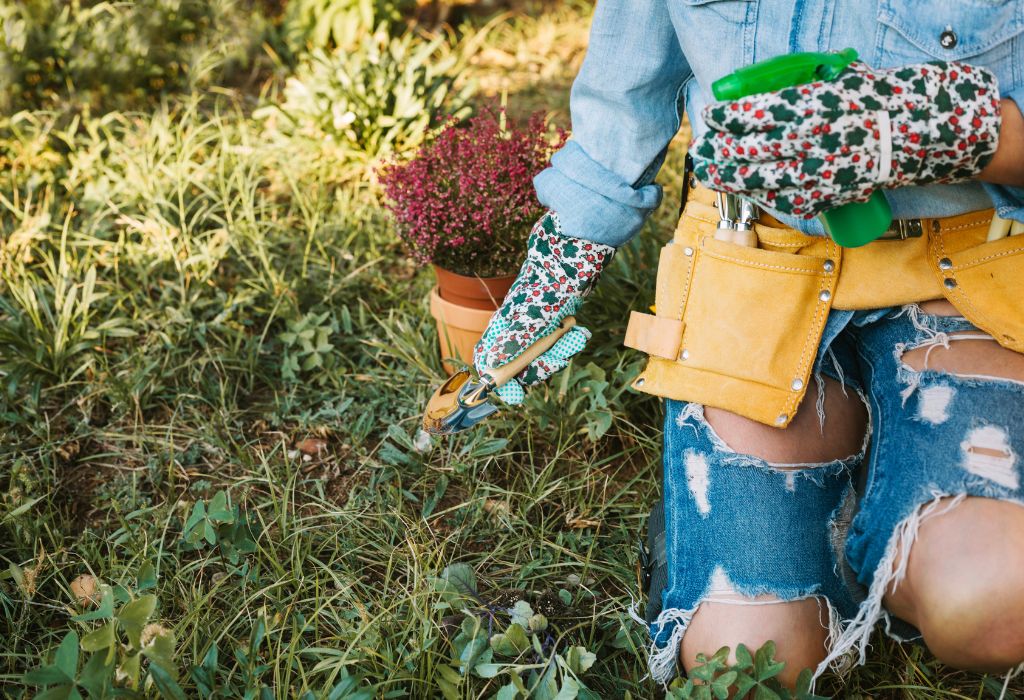Every gardener, whether beginner or experienced, faces the same challenge—weeds. They sprout quickly, spread faster, and compete with your plants for vital resources. If left uncontrolled, weeds can take over your garden in just a few weeks.
Studies show that weeds can reduce crop yields by 30–50%, and the average gardener spends more than 120 hours a year pulling weeds by hand. That’s time and effort that could be better spent growing healthy vegetables and flowers.
The good news? You don’t have to live with weeds dominating your garden. With the right methods, you can reduce weeds dramatically, saving time and improving plant health.
I. Why Reducing Weeds Matters

- Healthier Plants – Weeds steal nutrients and water, leaving your crops weaker.
- Less Time Wasted – Reducing weeds means fewer hours spent pulling them out.
- Lower Pest Risks – Many weeds harbor pests and diseases that affect vegetables.
- Higher Yields – Fewer weeds = more food, flowers, and greenery for you.
II. Why Weeds Keep Growing Back
- Soil Seed Bank – Weed seeds can survive for 5–10 years in soil, waiting for the right conditions.
- Seed Spread – Birds, wind, pets, and compost spread seeds across beds.
- Over-Tilling – While tilling kills some weeds, it also brings hidden seeds to the surface.
- Bare Soil Exposure – Uncovered soil is an open invitation for weed growth.
- Improper Watering – Overhead watering spreads moisture everywhere, helping weeds sprout faster.
III. Proven Methods to Reduce Weeds
1. Mulching
Mulching is one of the most effective methods for reducing weeds. By blocking sunlight, mulch prevents seeds from germinating.
- Organic mulch (straw, shredded leaves, grass clippings) improves soil quality as it decomposes.
- Inorganic mulch (plastic sheets, landscape fabric) lasts longer and offers stronger weed suppression.
- Apply mulch 2–3 inches thick for best results.
Research shows mulching can cut weed growth by up to 80% while also keeping soil moist.
2. Cover Crops
Cover crops are plants grown specifically to protect and enrich soil during off-seasons.
- Examples: rye, clover, alfalfa.
- They block weeds, add nitrogen, and prevent erosion.
- Studies show cover crops reduce weed growth by 50% or more.
3. Dense Planting & Companion Cropping
Planting crops closer together helps shade the soil, leaving less room for weeds.
- Examples: beans with corn, basil with tomatoes.
- Companion plants not only reduce weeds but also improve growth by deterring pests.
4. Raised Beds & Containers
Raised beds allow better control of soil and reduce weed intrusion.
- Filling beds with clean soil prevents many weed problems.
- Containers nearly eliminate weeds when fresh potting soil is used.
- Raised beds also make it easier to manage weeding in smaller areas.
5. Drip Irrigation
Unlike overhead watering, drip irrigation delivers water directly to plant roots.
- Keeps soil surface dry, reducing weed germination.
- Saves up to 50% water compared to sprinklers.
- Reduces overall weeding workload throughout the season.
6. Regular Hoeing & Hand Weeding
Weeds are easiest to remove when they’re young.
- Use a stirrup hoe or collinear hoe to cut weeds at soil level.
- Just 10 minutes per week of light hoeing can prevent hours of heavy weeding later.
7. Soil Solarization
Soil solarization uses the sun’s heat to kill weed seeds.
- Cover moist soil with clear plastic for 4–6 weeks in summer.
- Kills seeds, insects, and soil-borne diseases.
- Especially useful for preparing new garden plots.
IV. Eco-Friendly Weed Reduction Alternatives
- Corn Gluten Meal – A natural pre-emergent that prevents seeds from sprouting.
- Vinegar Spray – Kills young weeds but should only be used on paths (can harm crops).
- Flame Weeding – A propane torch burns weeds quickly, best for edges and walkways.
V. Mistakes Gardeners Make

- Waiting Too Long – Allowing weeds to flower spreads thousands of seeds.
- Thin Mulching – Less than 2 inches won’t block sunlight effectively.
- Using Contaminated Compost – Introduces fresh seeds into your garden.
- Over-Tilling Soil – Activates dormant seeds waiting underground.
VI. Seasonal Weed Reduction Strategy
- Spring – Apply mulch early, solarize soil, and install drip irrigation.
- Summer – Refresh mulch, weed weekly, practice dense planting.
- Fall – Sow cover crops, remove leftover weeds.
- Winter – Clean beds, solarize soil if climate allows, plan rotations.
VII. Natural vs. Chemical Weed Control (Comparison Table)
| Method Type | Best For | Advantages | Disadvantages | Long-Term Effectiveness |
| Mulching | Vegetable beds | Improves soil, reduces weeds 80% | Needs refreshing | High |
| Cover Crops | Off-season beds | Fertility + weed suppression | Seasonal planning | Very High |
| Dense Planting | Row crops | Boosts yield + shades weeds | Needs spacing control | High |
| Raised Beds | Small gardens | Easy soil control, fewer weeds | Higher setup cost | High |
| Drip Irrigation | All gardens | Saves water, fewer weeds | Initial setup required | High |
| Corn Gluten | Pre-planting | Natural, safe | Limited effectiveness | Medium |
| Chemicals | Large fields | Fast, easy | Soil damage, short-term | Low |
VIII. FAQs: Reducing Weeds in Garden
- What’s the easiest way to reduce weeds naturally?
Mulching is the simplest and most effective natural solution. - Does mulch really reduce weeds?
Yes—mulch can block up to 80% of weed growth if applied correctly. - Can vinegar safely reduce weeds near vegetables?
Only on walkways or non-crop areas—it can harm vegetable roots. - Do raised beds reduce weeds completely?
They drastically reduce weeds but may still need occasional hand-weeding. - How often should I weed if I mulch?
With proper mulch, light weeding once every 2–3 weeks is enough.
IX. Key Statistics for Gardeners
- Weeds reduce yields by 30–50%.
- Gardeners spend 120+ hours/year pulling weeds.
- A single dandelion can produce 15,000 seeds.
- Mulching cuts weed growth by up to 80%.
- Cover crops reduce weeds by 50%+.
Conclusion
Reducing weeds doesn’t have to feel like a never-ending battle. By using mulching, cover crops, drip irrigation, and raised beds, you can dramatically cut weed growth and enjoy a healthier, more productive garden.
Remember: prevention is always easier than pulling weeds later. With the right strategy, you’ll spend less time weeding and more time harvesting.
I’m Maya L. Greenwood, a lifelong plant lover who believes anyone can grow something beautiful with the right guidance. After years of testing soil mixes, pruning methods, irrigation tricks, and pest-safe solutions, I started EasyGardenTips.com to turn hard-won lessons into step-by-step advice. From seed starting and container gardens to composting and seasonal checklists, my goal is to make gardening simple, sustainable, and fun.
